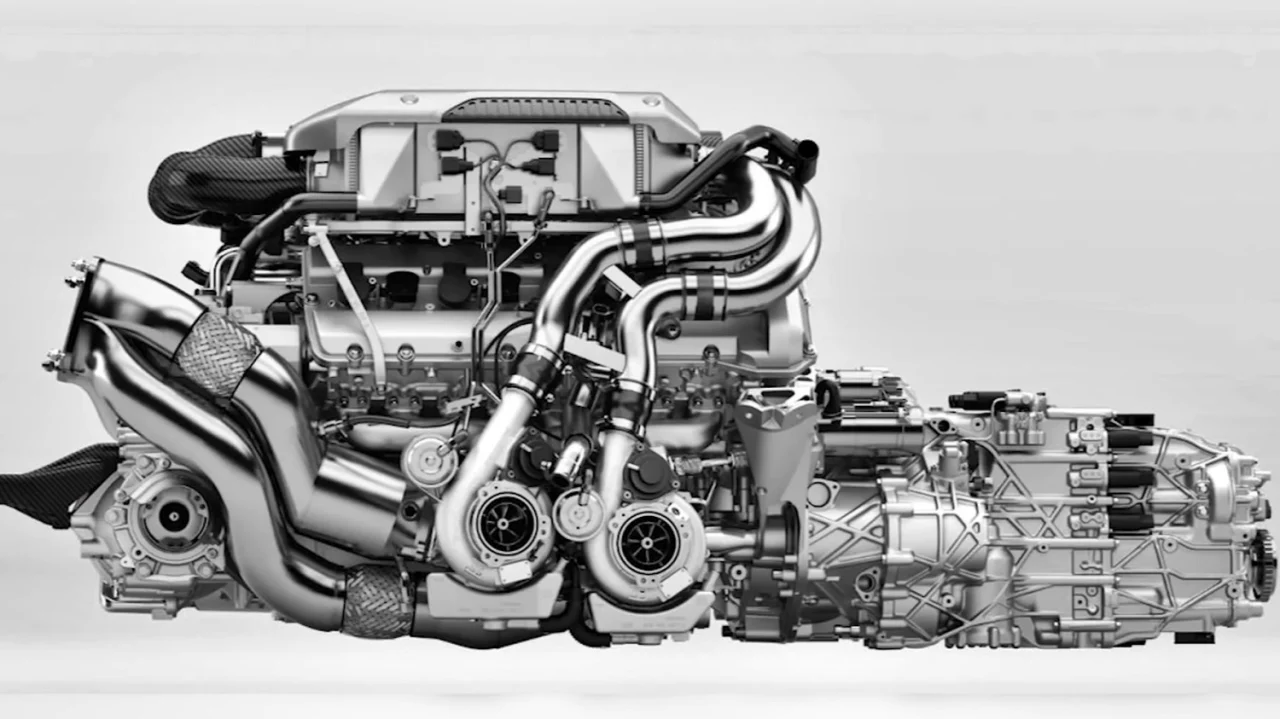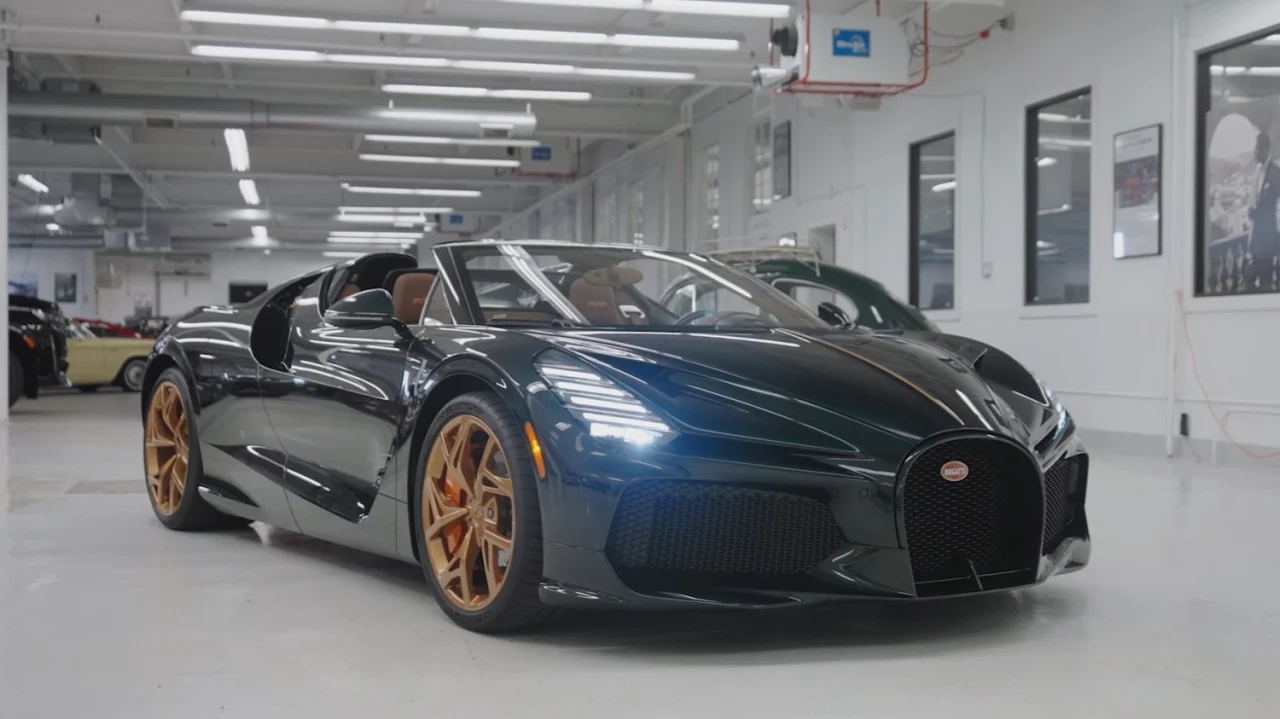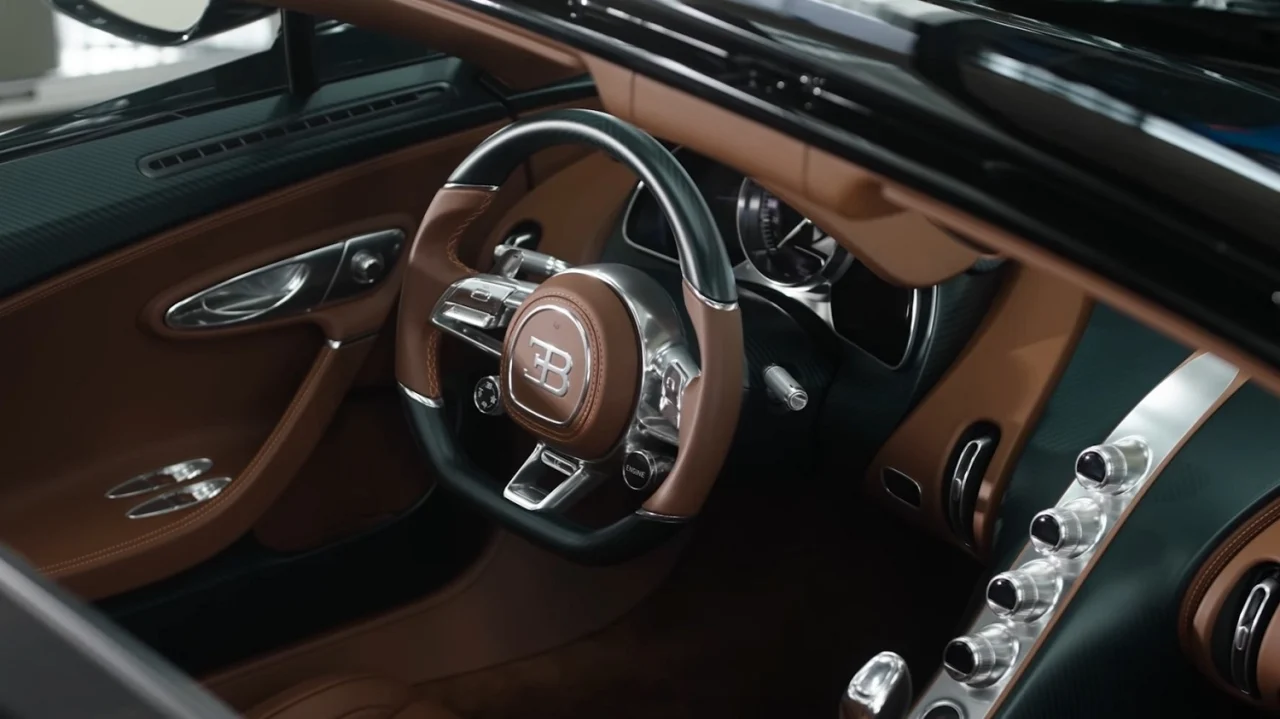When it debuted, the Bugatti Veyron—the first new Bugatti since the EB110 of the 1990s—was a statistical marvel and a freak of engineering: 16 cylinders and four turbos producing 1,001 PS (987 horsepower), enabling it to hit a top speed of over 250 mph.

That was 20 years ago. Thanks to the financial backing of Volkswagen, the Veyron’s 8.0-liter quad-turbo W16 engine wasn’t just a spectacular one-off. In various states of tune, the W16 has lasted for two decades, reaching its end in a production run of 99 W16 Mistral roadsters. In the video below, Jay Leno drives one that belongs to the Audrain Automobile Museum as his friend (and museum consulting director) Donald Osborne rides shotgun.

Given its Chiron roots, it’s logical to assume the W16 Mistral is just a roofless Chiron but, as Osborne points out, it’s not. According to the CTO of Bugatti Rimac (the new company formed under the ownership of Croatian electric hypercar manufacturer Rimac), “The Chiron family was never intended to have a roadster model.” Creating the W16 Mistral called for extensive re-engineering of various structures and components, as well as redesigning the air intake system and the body itself.

Although it’s not an outright top-speed car, the Mistral’s W16 still generates 1,578 horsepower (1,600 PS) and is capable of reaching 261 mph. At various points during his drive, Leno gooses the throttle, causing the W16 Mistral to surge forward. Whereas a V8 sounds like a ferocious beast, the open-top Bugatti ‘s W16 truly sounds like a force of nature.

Despite its 4,500-pound weight, the W16 Mistral comes across as much lighter than it is. Leno likens it to a Mazda Miata or, in show business terms, “watching Jackie Gleason tap dance.” Where does this final iteration of the W16 rank in Leno’s standings? And what does he think of the W16 Mistral as a whole? Turn up the volume and watch below.

